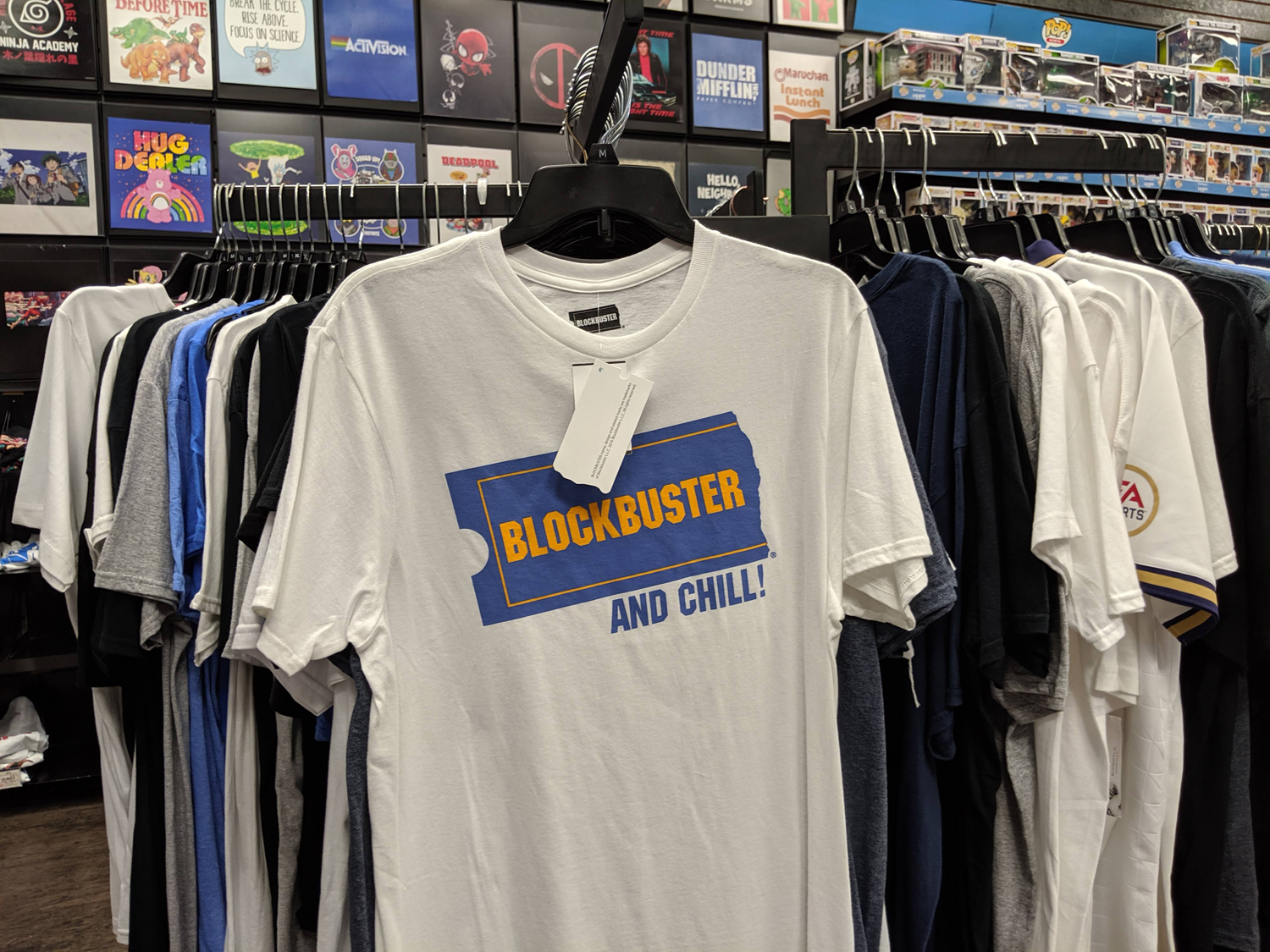- GameStop is, by far, the world’s largest video game retailer, with over 5,000 stores worldwide.
- The company had been in steady decline for years, but the bottom has dropped out of its stock price in 2019 – from $16 a share in January to below $4 by August.
- Amidst the stock plummeting in value, GameStop got a new CEO: George Sherman.
- In his first earnings call with the company back in June, Sherman laid out his three-point plan for GameStop’s resurgence.
- Visit Business Insider’s homepage for more stories.
On Monday, GameStop stock value hit its lowest point in nearly 20 years of trading: It closed the day at just $3.71 per share.
In January, just eight months ago, the company’s stock was hovering in the $15-$16 range; it’s been in steady decline ever since, as its C-suite reshuffled and a new CEO was appointed: George Sherman.
The reason for that steady decline is simple: Like Blockbuster Video and Tower Records before it, GameStop faces major challenges to its business model from the internet. As more people buy video games through digital storefronts, fewer buy games on physical discs from GameStop.
But Sherman remains steadfast that he has a plan to turn the company around – a plan which he presented during his first investor call with the company back in June. Here’s what he had to say:
Sherman is aware of the massive challenges facing GameStop.

Back in April, GameStop's board chose George Sherman for the role of CEO. Sherman's past is varied, but a common thread runs through it all: Executive leadership.
Before joining GameStop, Sherman served as the president of Advanced Auto Parts, as a senior VP at Best Buy, and as a regional VP at Target (among other places).
Despite the fact that Sherman has zero prior experience in the video game industry, he appears to be aware of the massive challenges facing GameStop.
"As I have been digging into our business, it's clear to me that we need to transform to remain a viable player in our industry," he said in June during the company's Q1 earnings call. "Our recent performance shows me that we have work to do to evolve and transform."
GameStop is facing massive challenges to its core business model: Selling used games.

In 2019, you can still buy music on compact discs and movies on Blu-ray discs. You could, of course, just stream music through one of several services, or you could buy a digital version of whatever album. The same could be said for movies.
But the world in which Sam Goody and Tower Records did good business selling music and movies on physical media (read: discs) is long gone - just like both companies.
A similar story is currently playing out in video games.
In 2013, the current console generation kicked off with the launch of both the Xbox One and the PlayStation 4. Alongside the launch of those consoles came a fundamental change to how games were distributed: Every game was available through the digital storefronts operated by Sony and Microsoft (PlayStation Network and Xbox Live, respectively). Nintendo joined the party in 2017 with the Nintendo Switch, and now every console game is available - on launch day - in a digital storefront.
If you want, you don't have to buy any game discs or cartridges ever again. On top of that, and even worse for GameStop: Many of the games in those digital storefronts aren't sold in stores at all.
The implications of that shift were huge for the world's biggest game retailer.
The foundation of GameStop's business is selling video games on discs. And with the digitization of console games, the company was facing an existential threat along the lines of iTunes' impact on record stores.
"Downloads became a thing and GameStop's business declined," the Wedbush analyst Michael Pachter, who covers the video game industry, told Business Insider in an interview in early July. "They were just kind of oblivious to it."
The name of the plan is "GameStop Reboot."

Sherman's plan is straightforward, and he broke it down into three main points during the June investor call:
- "Address [Selling, General and Administrative Expenses] SG&A that's been allowed to deleverage.
- Execute on opportunities to optimize the current business.
- Develop new revenue streams for our future."
This, generally speaking, is the crux of Sherman's "GameStop Reboot" plan. He goes into further detail on each point, and there's already been one example of the company enacting the plan.
The first component is basic housekeeping: Lower the cost of non-production expenses, like salary. To that end, GameStop just laid off dozens of regional managers and reorganized the way its stores report to the head office.

Last week, over 50 GameStop employees were laid off.
The layoffs were part of a larger restructuring at GameStop - "part of our continued GameStop Reboot transformation initiative," the internal email sent to staff said.
"There are more than 50 field leaders who have been impacted and will be leaving the GameStop team. This includes regional, district, HR [human resources], and LP [loss prevention] leaders. These leaders will be missed and we wish them success in their future endeavors."
This is the first example of addressing issues with so-called "SG&A," a financial term that stands for "Selling, General and Administrative Expenses."
What that means in non-business terms is GameStop's first addressable issue, in Sherman's eyes, is lowering the cost of salaries, taxes, advertising, and other non-production costs. By shrinking the company's regions, GameStop is paying for fewer regional managers (thus lowering the amount of money the company is paying for regional managers overall).
The second component of Sherman's plan revolves around "optimizing the current business," and he's begun hinting at what that could mean. For one: Lower prices on used games.

One key reason that people still shop at GameStop is for lower prices on games.
Those lower prices aren't attached to new games, but to used games: If you're willing to put up with an open box, you can often buy a relatively new game for less money at GameStop.
But sales of used games, just like sales of new games, is on the decline at GameStop.
"Our pre-owned business decreased 20.3% for the quarter," former CFO Robert Lloyd said on the June investor call. "We continue to see declines in pre-owned software, reflecting the softer demand for new physical games and the increasing popularity of the various digitally offered products."
The reason is simple: Lower prices are meaningful, but convenience is also meaningful. And in many cases, the difference in price between a used game at GameStop and its digital equivalent - available immediately over the internet, no driving required - is slim.
To that end, Sherman hinted at one potential solution: "We certainly believe that we're going to see more gross margin dollars in the long run by having fair and equitable pricing and just having a clear value prop to the customer."
In simpler terms, Sherman is planning to offer more competitive (read: lower) pricing on used games.
And finally, the third component: "Develop new revenue streams."

By far the vaguest component of Sherman's plan, and the one most aimed at the long term, is the concept of developing new revenue streams.
To that end, Sherman said GameStop is testing out new store concepts. "These tests are designed to focus on several elements," he said, "including gaming, new and pre-owned, collectibles, immersive interactive experiences, and pop culture."
He also said that GameStop will build a new business on the digital frontier, where game buyers are increasingly moving. "We understand that digital will continue to be a significant part of the video game industry," he said. "GameStop needs to be there, and I'm committed to ensuring that we will be."
It remains to be seen what those moves into digital will be - the company has dabbled in digital game distribution in the past, but never fully committed.
One step Sherman didn't mention, but is assuredly going to be taken: Closing stores.

GameStop locations aren't franchised - the main company pays for each location, and that's a ton of overhead.
As of June, GameStop operated, "3,707 video game stores in the US and 1,912 internationally," in addition to "41 domestic collectibles stores and 60 international collectibles stores."
In total, that's just over 5,700 stores.
But there's good news too: The average remaining lease on any given GameStop location is just two years. As those leases reach their expiration dates, it's very likely that GameStop will let many of them drift back into the real estate market rather than renew.

